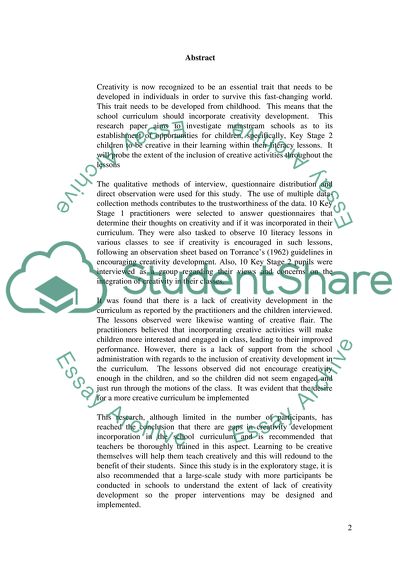Cite this document
(Encouraging Childrens Participation in the Creative Arts Research Paper, n.d.)
Encouraging Childrens Participation in the Creative Arts Research Paper. Retrieved from https://studentshare.org/social-science/1740019-findings-and-analysis-dissertation
Encouraging Childrens Participation in the Creative Arts Research Paper. Retrieved from https://studentshare.org/social-science/1740019-findings-and-analysis-dissertation
(Encouraging Childrens Participation in the Creative Arts Research Paper)
Encouraging Childrens Participation in the Creative Arts Research Paper. https://studentshare.org/social-science/1740019-findings-and-analysis-dissertation.
Encouraging Childrens Participation in the Creative Arts Research Paper. https://studentshare.org/social-science/1740019-findings-and-analysis-dissertation.
“Encouraging Childrens Participation in the Creative Arts Research Paper”, n.d. https://studentshare.org/social-science/1740019-findings-and-analysis-dissertation.


